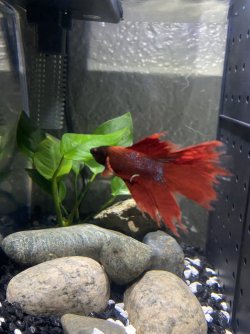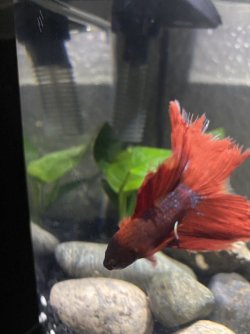Bettaguy08
Fish Crazy
I have been trying to get rid of these fin rot for a while now using basic ways such as using aquarium salt, keeping good water conditions, but my betta fish still manages to have fin rot. He isn’t lethargic or anything like that, but he still has fin rot. Anyone think they might know the solution
Is the tank cycled?: I would assume so since I haven’t had any ammonia or nitrites for a while now.
Perimeters?: I’ve tested the water and the only notable thing is the hardness being very hard, they isn’t nitrites or ammonia, and the Nitrates level is low.
Is the tank heated?: No
Plants?: Yes
Tank size?: embarrassing
Fed well?: Yes I feed them around 2-3 fish food pellets every 2-3 days cause I don’t want to over feed them.
Is the tank cycled?: I would assume so since I haven’t had any ammonia or nitrites for a while now.
Perimeters?: I’ve tested the water and the only notable thing is the hardness being very hard, they isn’t nitrites or ammonia, and the Nitrates level is low.
Is the tank heated?: No
Plants?: Yes
Tank size?: embarrassing
Fed well?: Yes I feed them around 2-3 fish food pellets every 2-3 days cause I don’t want to over feed them.
Attachments
Last edited:



